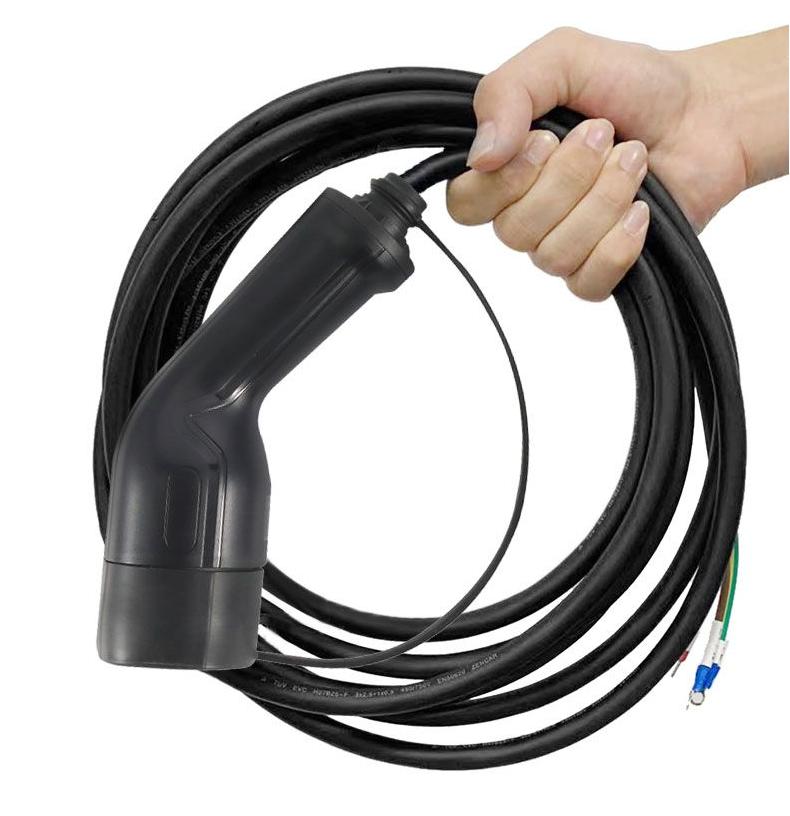Abstract
The foundation of the booming new energy vehicle industry lies not only in batteries and motors, but also in the “lifeline” connecting vehicles and charging piles – charging cables. Faced with increasingly stringent functional integration, safety assurance and global standardization requirements, traditional cable standards are no longer able to cope with them. This article deeply analyzes the core challenges and development directions of charging cables in terms of function, safety, materials, structure and standardization, and reveals the key significance of breaking through technical bottlenecks to ensure industry safety and global interoperability.

1. Functional integration: intelligent carrier beyond energy transmission
Modern charging cables are no longer simple power channels. In order to achieve real-time interaction and safe control of the battery status of charging piles and vehicles (such as adjusting current and monitoring insulation), cables must integrate communication and control cores. For example, the typical structure of a three-phase charging cable includes 5 power cores (three-phase, neutral, ground) and 2 signal cores, forming a “5 large + 2 small” complex. This complex function far exceeds the design limit of traditional standards (such as IEC 60245/60227) that only support 5-core equal-section structures.
2. Safety upgrade: flame-retardant and durable lifeline
The characteristics of long-term high current in the charging process place extreme demands on cable safety. Traditional PVC materials are prone to release toxic halogen gases and thick smoke when exposed to fire. New halogen-free flame-retardant materials (such as thermoplastic polyolefins and polyester elastomers) have become key solutions: they have low smoke density and no corrosive gases when burning, and the oxygen index is significantly improved (such as the tensile strength of halogen-free thermosetting polyolefin sheath materials> 10.0 MPa, far exceeding the 6.5 MPa of SE3 rubber in the IEC standard), which improves the fire safety factor from the root.
3. Standard lag: conflict between global norms and local needs
Currently, charging cable production mostly refers to IEC 60245/60227 or American standard UL 62, but these standards have obvious limitations:
- Functional loss: The maximum number of cores in the IEC standard is only 5, which cannot accommodate signal lines;
- Structural rigidity: The wire cores are required to have the same cross-section, which cannot adapt to the demand for “large and small wire composites”;
- Material obsolescence: It does not cover high-performance new sheath materials such as polyurethane (whose wear resistance can be up to 3 times that of traditional materials). Although Europe has tried to respond through the HD22.4/HD22.12 coordination document, it still lacks an independent charging cable standard.
IV. Material Revolution: New Compounds Lead Performance Leap
In order to meet the requirements of frequent bending, outdoor weather resistance and mechanical strength, material innovation is imperative:
- Insulation layer: Halogen-free thermoplastic polyolefin (IEV-1) has excellent electrical properties and flexibility;
- Sheath layer: Polyurethane (EVM-1) has significantly improved tear strength, and halogen-free flame-retardant thermosetting polyolefin (EVM-2) balances flame retardancy and mechanical properties. The key parameters of these materials (such as tensile strength and elongation at break) have fully surpassed traditional standards (see the evaluation of charging cable materials in the IEC TR 62893 series of technical reports).
5. Structural evolution: flexible design adapted to multiple charging scenarios
The diversity of charging modes (AC slow charging, DC fast charging, AC/DC composite) drives the innovation of cable structure:
- Flexible number of cores: from single-phase 7-core to three-phase multi-core combination, supporting different power requirements;
- Differentiation of cross-section: power line (large cross-section) and signal line (small cross-section) are layered to optimize space and performance;
- Lightweight design: The application of new materials reduces the weight of the cable by 30%, improving the user’s operating experience.
VI. Standard unification: Building a globally recognized technical language
It has become an international consensus to formulate independent charging cable standards:
- Functional integration: clarify the correspondence between communication protocols and wire cores, refer to ISO 15118 vehicle-grid communication interface standard;
- Material specification: establish a test system for halogen-free flame retardant and high tear resistance materials, such as UL 62 certification requirements for thermoplastic elastomers;
- Test enhancement: add scenario verification projects such as high and low temperature cycles and bending life (such as IEC 62893-2-1 for EV cable durability test specifications).
Summary
As new energy vehicles drive towards the future, the strength of the “technical blood vessel” of charging cables determines the endurance of the entire industry. From the shield of halogen-free materials to the veins of smart cores, from breaking the ice of standard dilemmas to the bridge of global intercommunication – every material innovation and standard unification is a double crowning of safety and efficiency. Only by breaking through this seemingly minor but crucial technical bottleneck can the green wheels truly run freely in the unimpeded electric current.
